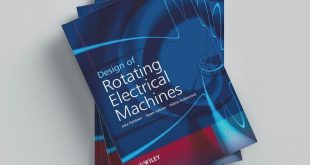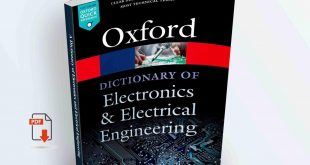Electrical Engineering is the foundation of modern technology. From lighting our homes to running powerful industrial machines, it plays a critical role in almost every aspect of life. This handbook introduces core topics essential for understanding and working with electrical systems.

1. DC Circuits
Direct Current (DC) flows in a single direction. DC circuits are the simplest form of electric circuits and are governed by Ohm’s Law (V = IR), Kirchhoff’s Laws, and basic network theorems. Common components include resistors, capacitors, and power sources like batteries.
Key Concepts:
-
Series and parallel resistive circuits
-
Voltage and current division
-
Power calculation in DC circuits
2. Electromagnetic Induction
This principle, discovered by Faraday, states that a voltage is induced in a conductor when it experiences a changing magnetic field. It is the fundamental concept behind generators, transformers, and inductive sensors.
Key Concepts:
-
Faraday’s Law
-
Lenz’s Law
-
Self and mutual inductance
3. AC Circuits
Alternating Current (AC) circuits carry current that changes direction periodically. These circuits are more complex due to the presence of reactance from capacitors and inductors.
Key Concepts:
-
Sinusoidal waveforms
-
Impedance (Z = R + jX)
-
Power factor, real, reactive, and apparent power
-
Resonance in RLC circuits
4. Network Theory
Network theory involves the analysis of electrical networks using mathematical tools and theorems.
Key Concepts:
-
Superposition theorem
-
Thevenin’s and Norton’s theorems
-
Mesh and nodal analysis
-
Maximum power transfer theorem
5. Three-Phase Supply
Three-phase power systems are used extensively in power generation and industrial systems for their efficiency and balanced load characteristics.
Key Concepts:
-
Star (Y) and Delta (Δ) connections
-
Line and phase voltage/current relationships
-
Power calculation in balanced/unbalanced loads
6. Basic Instruments
Measurement is critical in electrical engineering. Instruments help monitor voltage, current, resistance, and power.
Key Instruments:
-
Ammeter and voltmeter
-
Wattmeter and energy meter
-
Multimeter
-
Oscilloscope
7. Transformer
A transformer is a static device that transfers AC power between circuits at different voltage levels using electromagnetic induction.
Key Concepts:
-
Step-up and step-down transformers
-
Ideal vs. practical transformer
-
Efficiency and voltage regulation
-
Auto-transformers
8. DC Machines
These machines operate on DC supply and are used in variable speed applications.
Types:
-
DC Motors (Shunt, Series, Compound)
-
DC Generators
-
Characteristics and applications
-
Speed control and braking methods
9. Three-Phase Synchronous Machines
Synchronous machines operate at constant speed irrespective of the load. They are widely used as alternators in power plants.
Key Concepts:
-
Construction and working
-
Voltage regulation
-
Power angle characteristics
-
Synchronizing methods
10. Three-Phase Induction Motors
These are the most commonly used motors in industries due to their ruggedness and simplicity.
Types:
-
Squirrel Cage
-
Slip Ring
-
Torque-speed characteristics
-
Starting and speed control methods
11. Single-Phase Induction Motors
These are used in household appliances and small machinery.
Types:
-
Split-phase
-
Capacitor start/run
-
Shaded-pole motor
-
Limitations compared to 3-phase motors
12. Power System
A power system consists of generation, transmission, distribution, and utilization of electric power.
Key Components:
-
Power plants (thermal, hydro, nuclear)
-
Transmission lines and substations
-
Load flow and fault analysis
-
Protection systems (circuit breakers, relays)
Conclusion & Book⬇️
This handbook provides a foundation in Basic Electrical Engineering. A solid grasp of these topics enables engineers to design, maintain, and innovate electrical systems for a wide range of applications—from simple gadgets to national power grids.
 Boilersinfo Boiler and Mechanical Power Digital Library
Boilersinfo Boiler and Mechanical Power Digital Library





